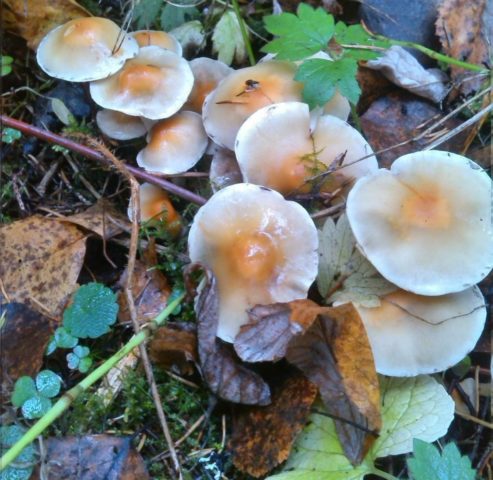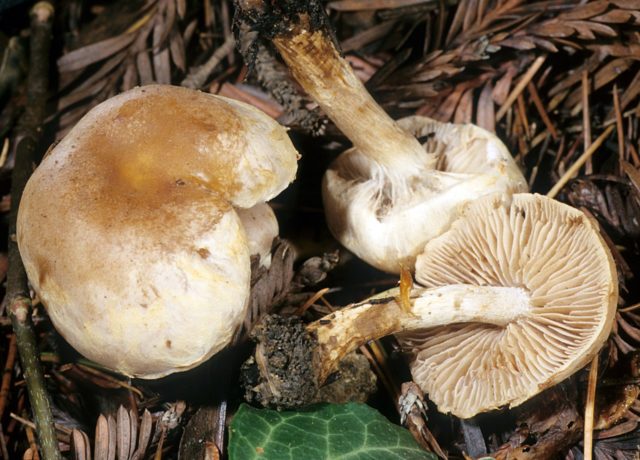Content
Hebeloma coal-loving is a representative of the Hymenogastrov family, whose Latin name is Hebeloma birrus. Also has a number of other synonyms: Agaricus birrus, Hylophila birra, Hebeloma birrum, Hebeloma birrum var. Birrum.
What does a coal-loving gebeloma look like

Grows both one at a time and in numerous groups
You can recognize a coal-loving Gebel by the following characteristics:
- At a young age, the cap is hemispherical with a noticeable central tubercle; as it grows, it becomes flat. It is rather small in size, does not reach 2 cm in diameter. The surface of the coal-loving gebeloma is bare, slimy, sticky to the touch. Painted in yellowish shades with lighter edges.
- Dirty brown plates with almost whitish edges are located under the cap.
- Spores are almond-shaped, spore powder of dark brown color.
- The stem is cylindrical, in some specimens it may be slightly thickened at the base. It is characterized as very thin, the thickness of which is no more than 5 mm, and in length reaches from 2 to 4 cm. The surface is light buffy, covered with a scaly bloom. At the base of the peduncle there is a thin vegetative body with a fluffy structure. Unlike its congeners, this specimen lacks pronounced remains of the bedspread.
- The pulp of Gebeloma coal-loving is white, has a pleasant or not pronounced aroma and a bitter taste.
Where does the coal-loving Gebeloma grow
The name of this instance speaks for itself. Coal-loving Gebeloma prefers to grow on burnt-out places, bonfires and in places of old fires. It is most often found in Asia and Europe, less often in Russia, in particular, in the Khabarovsk Territory, the Republic of Tatarstan and the Magadan Region. Active fruiting of these mushrooms occurs in August.
Is it possible for a gebel to eat coal-loving
The described gift of the forest is inedible and poisonous. It is forbidden to eat coal-loving gebel, as it can lead to serious health problems.
Doubles of Hebeloma coal-loving

The fruiting bodies of Gebeloma coal-loving are particularly fragile and fragile.
The species under consideration has quite a few twins, these include:
- Gebeloma belted - is a conditionally edible mushroom. As a rule, it grows in a variety of forests, forms mycorrhiza with broad-leaved and coniferous trees, most often with pines. It differs from coal-loving in the largest size of fruit bodies. Also, a characteristic feature of the twin is a whitish hollow stem with dark shades at the base. Its thickness is about 1 cm, and its length is up to 7 cm.
- Hebeloma sticky - an inedible specimen. You can recognize the double by the hat, the size of which sometimes reaches 10 cm.The color is light brown or yellowish, but sometimes there are specimens with a brick or red surface. It is sticky and slimy to the touch, like coal-loving, but with age it becomes dry and smooth.Also, a distinctive feature is the unpleasant rare smell of pulp.
Conclusion
Coal-loving Gebeloma is a small-sized gift of the forest, which contains poisonous substances. Despite the fact that no deaths from this species have been recorded, eating it can cause severe poisoning. It is also worth noting that experts do not recommend picking even edible mushrooms of the Gebeloma genus, since its representatives are very similar to each other and sometimes it is almost impossible to distinguish edible from poisonous.










